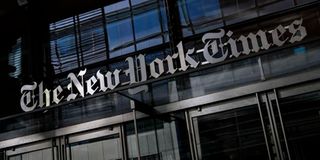Bundling news and how the NYT got it right

The New York Times Building in New York City on February 1, 2022.
This week, the New York Times announced that it will be shutting down its sports desk and redeploying the 35 journalists to other roles within the NYT newsroom as there will be no layoffs. Going forward, the NYT will be relying on The Athletic for sports coverage, a website that NYT acquired in January last year for $550 million.
The Athletic is a sports-only website started in 2016 by Alex Mather and Adam Hansmann and has over the years gained impressive traction with over 400 sports journalists. Its acquisition by the NYT last year was big news for the industry leaving many wondering about the fate of the award-winning NYT sports desk.
Now, it is clear that the NYT is keen on improving efficiencies in sports coverage and also as the executive editors noted ‘an evolution in how we cover sports’. According to the newspaper’s executive editors, this move ushers in a new era of sports coverage as evidenced in an email sent to NYT staff early this week; “We plan to focus even more directly on distinctive, high-impact news and enterprise journalism about how sports intersect with money, power, culture, politics and society at large.”
While this move certainly changes how sports news is covered by the American media giant, it is important to understand that the disbanding of the sports desk is fundamentally a business decision and a big step toward NYT’s bundling strategy. The New York Times has for a while been celebrated as a pioneer and a success story in digital news publishing, being among the first news companies to set up a website and a paywall.
The Times has undergone various bouts of renaissances and has always been largely open about its strategies. Last year, the company, under its CEO Meredith Kopit, announced a new phase of its long-term strategy; to be the essential subscription for every curious, English-speaking person seeking to understand and engage with the world.
Guided by this strategy, The Times embarked on aggressive marketing campaigns to drive its bundling strategy, which is basically selling several news and lifestyle information products and services together as a single unit. Bundling is not really a new concept, as print newspapers have been bundling content for decades; by selling sports, news, lifestyle, games and magazines (pullouts) as a single unit.
Using this strategy, the NYT is now selling its products and services as a bundle of news content (including print newspaper, website and app), cooking content (NYT Cooking), Games (including Spelling Bee and Wordle), Wirecutter, a product review website and now The Athletic, a sports website.
The bundling strategy seems to be working for The Times, as they have 9.7 million total subscribers by May this year, well on their path to achieving the 15 million mark by 2027. While the NYT is certainly not a representative of all media – let alone US media- it is impressive to see interesting digital strategies play out in making up for the losses made from the declining print advertising business model. Of course, the big question will be, will this work for the long haul when consumers have more options in the market?
Dr Chege is a media and technology researcher.





